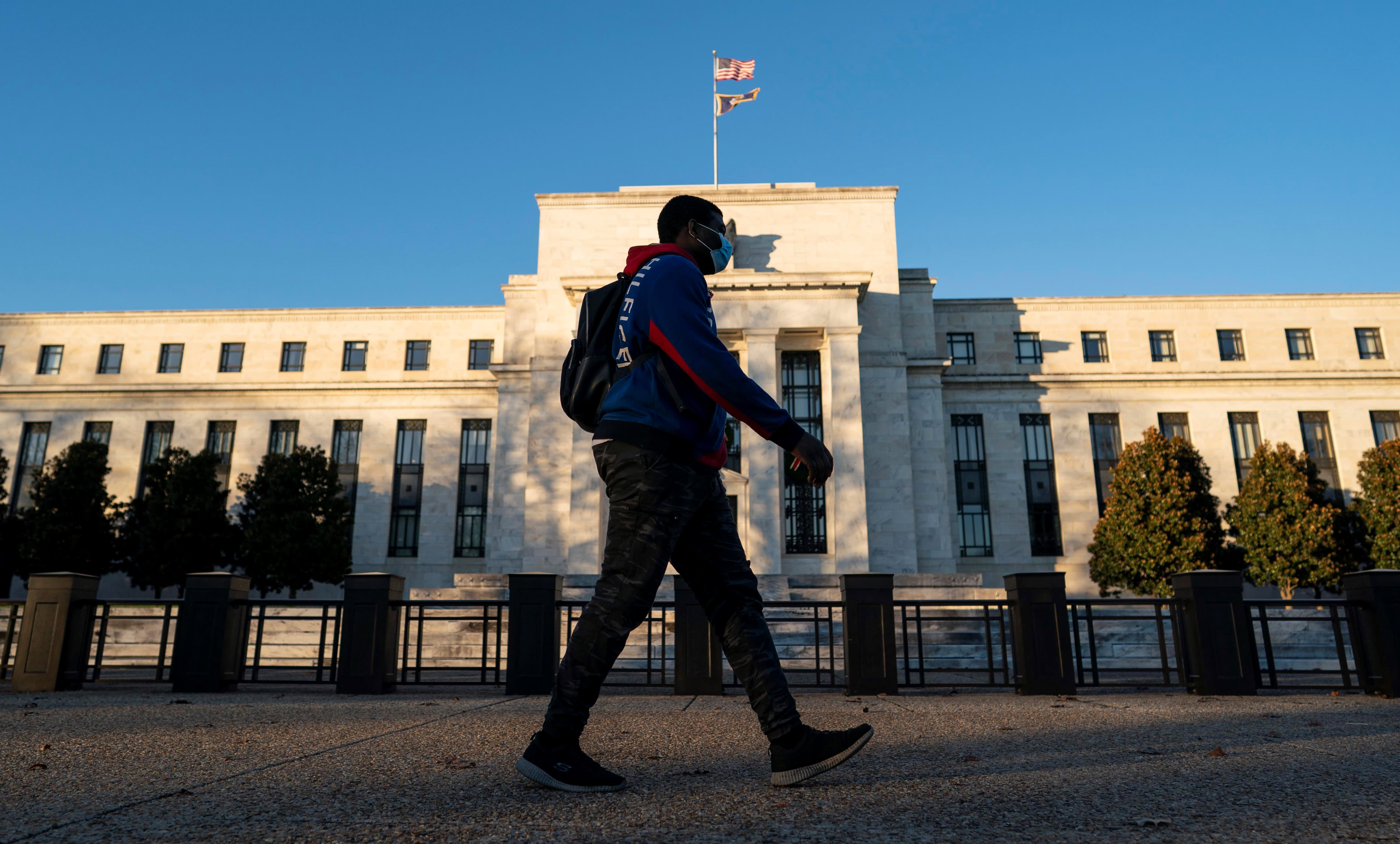A man wearing a face mask walks past the U.S. Federal Reserve in Washington, D.C., the United States, on Dec. 2, 2020.
Liu Jie | Xinhua News Agency | Getty Images
The U.S. Federal Reserve won’t step in to temper rising inflation any time soon, market watchers have said, despite surging yields that have roiled global stock markets.
Stocks have been tethered over the past week to rising Treasury yields and the possibility that the Fed will tighten monetary policy to tackle an expected rise in inflation.
On Thursday, Fed Chairman Jerome Powell acknowledged that “some upward pressure on prices” could occur as the economy reopens, noting that he expects the central bank to be “patient” on policy action even if the economy sees “transitory increases in inflation.”
Though the Fed has consistently vowed to keep its monetary policy accommodative and suggested employment and inflation are still well below target, Powell’s comments sent the benchmark U.S. 10-year Treasury yield back above 1.5% and rattled global stock markets. That yield hit an intraday high of 1.626% on Friday after a solid jobs report.
“The bond market vigilantes can shout all they want, but for now, the Fed is not planning to twist. Maybe that changes if bond markets become disorderly enough to trigger credit spread widening, but that’s not happening yet.” Kit Juckes, Societe Generale‘s global head of foreign exchange strategy, said in a research note.
“Maybe, not giving in to every whim of the equity market being held hostage by every wobble in risk sentiment, reflects an awareness of the bigger picture — overvalued stock markets are more dangerous than slightly higher bond yields,” he said.
Inflation ‘will fall back’ toward target in 2022
The Fed has referred to contingent forward guidance and vowed to consider the underlying data as it looks to steer the economy out of the coronavirus crisis.
“Their projections for the economy suggest that inflation, after a burst this year, will fall back towards target in 2022, and that the job market needs to be very hot in a more comprehensive way than we have seen in the past for them to start tightening policy,” said Francesco Garzarelli, head of macro research at Eisler Capital.
Garzarelli told CNBC’s “Street Signs Europe” on Friday that the steepening of the yield curve was consistent with the Fed’s current framework of adapting to the incoming data rather than operating according to forecasts, particularly when factoring in positive news on vaccinations and fiscal stimulus.
“What stops it, I think, here the Fed wants to have full control over the front end of the curve and I think it may come out if the situation gets very rowdy in stepping up its guidance at the front end,” he said, adding that the central bank was unlikely to tinker with the long end of the curve. The front end of the curve refers to short-term debt securities, rather than longer dated bonds.
Powell emphasized on Thursday that the rise in bond yields and adverse market reaction was not considered by the central bank to be a “disorderly” one that would require direct intervention.
Charalambos Pissouros, senior market analyst at JFD Bank, also noted the Fed’s willingness to overshoot its 2% inflation target for several months in the short term with the hope of stabilizing further down the line.
“As a result, we expect fears over high inflation to ease in the foreseeable future, which may allow equities and other risk-linked assets to rebound,” he said in a note Friday.
“As for the dollar, it may come under selling interest on more signs that the Fed is likely to stay accommodative for longer than previously assumed.”
Meanwhile, Santa Lucia Asset Management’s James Morton believes that the Fed is likely to tweak its policy in the near term if inflation, and yields, continue to rise.
“The U.S. government is the biggest debtor after all and they cannot afford higher interest rates,” Morton told CNBC’s “Capital Connection” on Friday.
